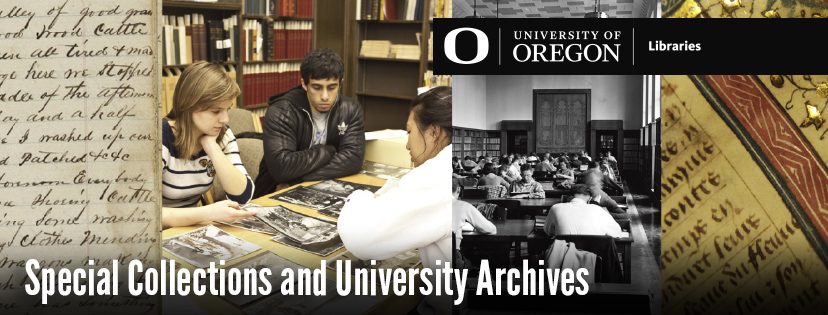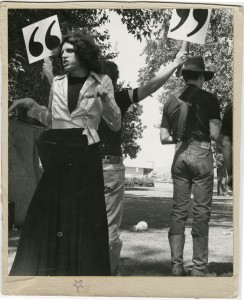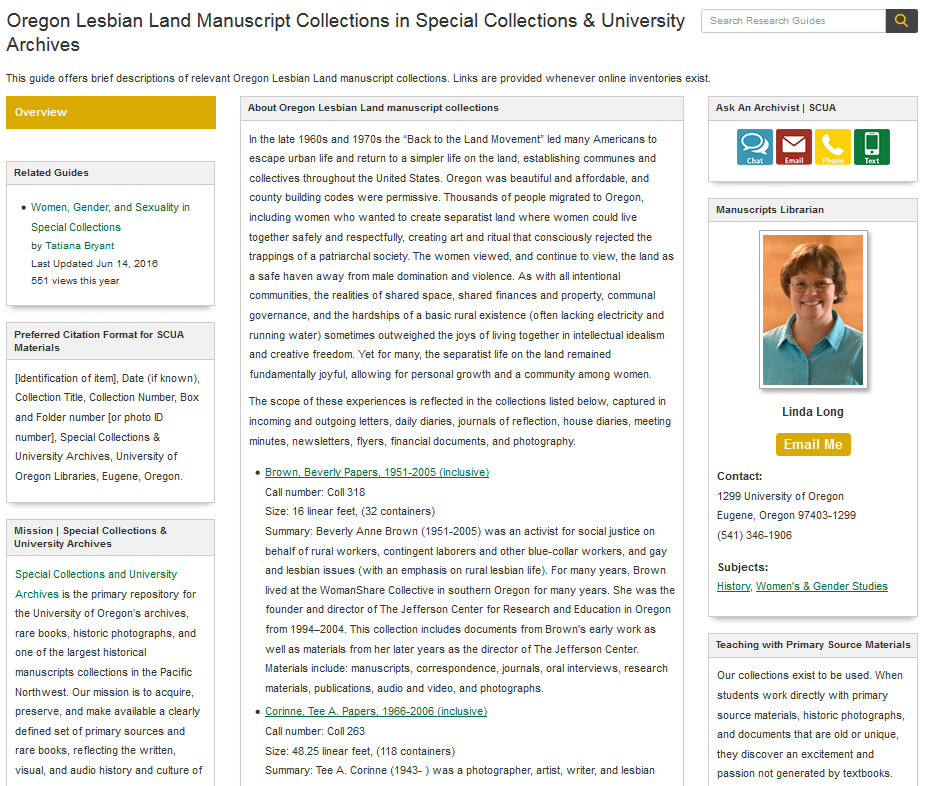New Resources for LGTBQ Special Collections
The University of Oregon Special Collections and University Archives holds a number of fascinating collections focused on LGBTQ history at the UO and throughout Oregon.
Creating Change: Forty Years of LGBTQ Activism at The University of Oregon is a new digital exhibit that celebrates the long history of LGTBQ activism at the University of Oregon. First staged as a physical exhibit at the Eugene Airport (Mahlon Sweet Field), its transitioned into a digital exhibit in time for the 25th anniversary of the formation of the Standing Committee on Lesbian, Gay, Bisexual, Transgender (LGBT) Concerns at the University of Oregon.
“The standing committee was initially formed as a recommendation of a task force in the late 1980s to enhance the quality of life on campus for lesbians and gay men, and for the university community as a whole. To celebrate this anniversary, along with more than forty years of grassroots activism, this exhibit was prepared to illuminate the rich history of LGBT life and culture at the University of Oregon. Our history can be characterized as a long and sustained struggle to obtain equal rights and protection.”-Linda Long, Manuscripts Curator
The Oregon Lesbian Land manuscript collections research guide covers collections related to the “Back to the Land Movement” of the late 1960s and 1970s, which “led many Americans to escape urban life and return to a simpler life on the land, establishing communes and collectives throughout the United States.” These collections include incoming and outgoing letters, daily diaries, journals of reflection, house diaries, meeting minutes, newsletters, flyers, financial documents, and photography documenting the Movement in Oregon, which at the time was:
“…beautiful and affordable, and county building codes were permissive. Thousands of people migrated to Oregon, including women who wanted to create separatist land where women could live together safely and respectfully, creating art and ritual that consciously rejected the trappings of a patriarchal society. The women viewed, and continue to view, the land as a safe haven away from male domination and violence. As with all intentional communities, the realities of shared space, shared finances and property, communal governance, and the hardships of a basic rural existence (often lacking electricity and running water) sometimes outweighed the joys of living together in intellectual idealism and creative freedom. Yet for many, the separatist life on the land remained fundamentally joyful, allowing for personal growth and a community among women.” -Linda Long, Manuscripts Curator




Good article for lgbti + rights, thank you.
—
Our site: LGBTI News